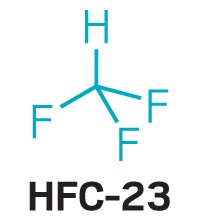Advertisement
Grab your lab coat. Let's get started
Welcome!
Welcome!
Create an account below to get 6 C&EN articles per month, receive newsletters and more - all free.
It seems this is your first time logging in online. Please enter the following information to continue.
As an ACS member you automatically get access to this site. All we need is few more details to create your reading experience.
Not you? Sign in with a different account.
Not you? Sign in with a different account.
ERROR 1
ERROR 1
ERROR 2
ERROR 2
ERROR 2
ERROR 2
ERROR 2
Password and Confirm password must match.
If you have an ACS member number, please enter it here so we can link this account to your membership. (optional)
ERROR 2
ACS values your privacy. By submitting your information, you are gaining access to C&EN and subscribing to our weekly newsletter. We use the information you provide to make your reading experience better, and we will never sell your data to third party members.
Environment
Curtailing HFCs
Climate Change: White House and industry pledge to pare back emissions of powerful greenhouse gases
by Cheryl Hogue
September 22, 2014
| A version of this story appeared in
Volume 92, Issue 38
To help stave off climate change, the White House, chemical producers, and other businesses last week committed to slash emissions of hydrofluorocarbons (HFCs). These compounds, which replaced ozone-depleting chemicals including chlorofluorocarbon refrigerants, don’t directly harm stratospheric ozone but are potent greenhouse gases.

The combined pledges will curb HFC emissions equivalent to 700 million metric tons of carbon dioxide through 2025, the White House estimates.
Releases of HFCs are rising rapidly and contribute to human-caused climate change. Most HFCs have a potential for trapping heat in the atmosphere that is hundreds to thousands of times more per molecule than that of CO2. U.S. emissions of HFCs are expected to nearly double by 2020 and triple by 2030 unless industry and the federal government act, the White House says. In 2012, U.S. emissions of HFCs were equivalent to more than 150 million metric tons of CO2, according to EPA figures.
“We recognize that HFCs can have high global-warming potential and that without a change in direction, their use and emissions will increase substantially, particularly in the developing world,” says Kathryn K. McCord, global business director of DuPont fluorochemicals. DuPont and another chemical maker, Honeywell, pledged to curb HFC emissions and are introducing alternative refrigerants that have significantly lower global-warming potentials than HFCs.
The Obama Administration committed to fund R&D on cooling technologies that rely on chemicals other than HFCs or don’t use refrigerants at all. Also, EPA will consider issuing regulations, which HFC manufacturers want, to govern how air-conditioning and refrigeration technicians manage these substances.
The White House says the new pledges are designed to build momentum for a global phaseout of HFCs under the Montreal Protocol on Substances That Deplete the Ozone Layer.
More announcements about efforts to curb HFC emissions are expected at a summit in New York City this week convened by UN Secretary-General Ban Ki-moon. Ban is hosting the meeting of world leaders to drum up high-level support for a new climate-change treaty that is to include greenhouse gas emissions controls for all nations. Negotiations on that treaty are expected to culminate at the end of 2015.





Join the conversation
Contact the reporter
Submit a Letter to the Editor for publication
Engage with us on Twitter